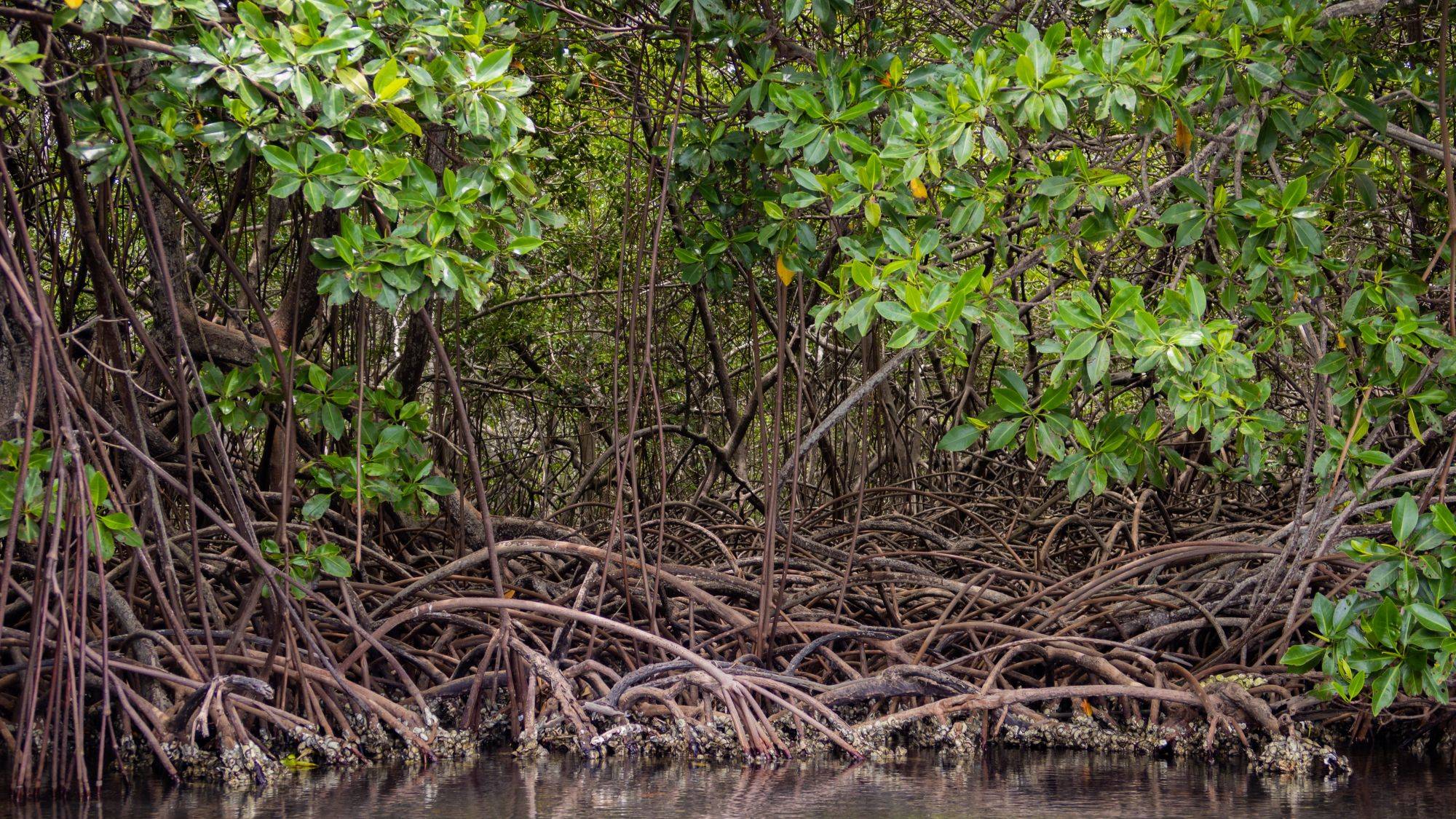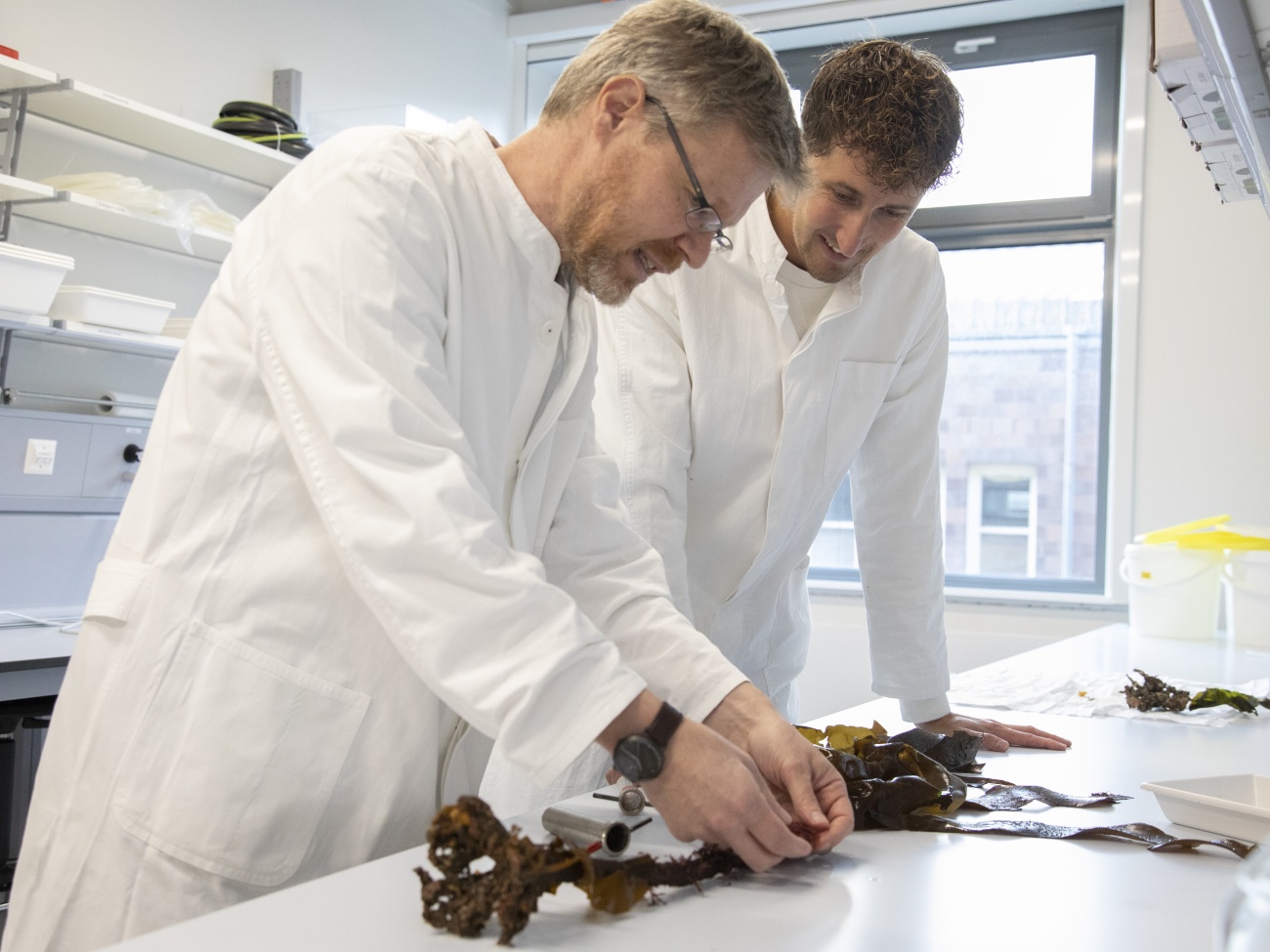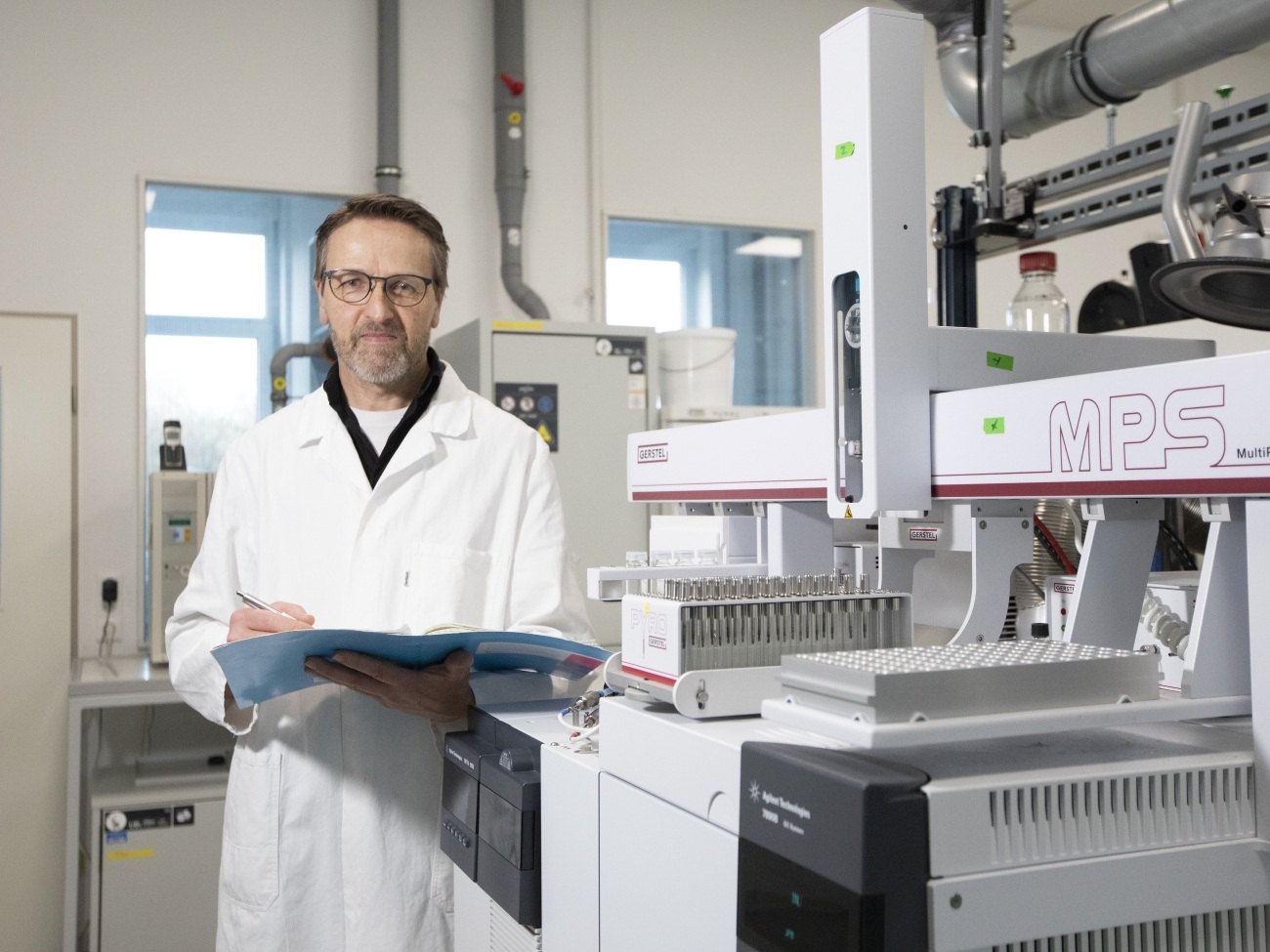
© Prof. Dr. Martin Zimmer
The Power of Natural Climate Protectors
Sea4soCiety Project – What can coastal ecosystems do to protect the climate?
Climate goals can only be met if carbon dioxide is removed from the atmosphere. Mangroves, kelp forests, and seagrass meadows take care of this naturally. How can these coastal ecosystems contribute to climate protection? And how can they be made more efficient and resilient in the face of change? The sea4soCiety research project, in which researchers from the U Bremen Research Alliance play a decisive role, is investigating these and similar questions.
In dispassionate scientific terms, mangroves are ecological service providers. These services are multifarious and their benefits extend well beyond those provided to local communities who depend on them most. Mangroves are used to make teas, medicines, building materials, and alcoholic beverages; their fruits supposedly taste like cheese. They serve as an aquatic nursery for fish, provide a habitat for mussels and other seafood, and their roots protect the coast from erosion and storm surges while purifying wastewater from the hinterland. At the same time, they also store organic molecules formed from carbon dioxide (CO2) in their sediment, their wood, and their leaves. Experts refer to this as “blue carbon.”
“Mangrove forests are an extremely challenging wilderness.”Dr. Martin Zimmer
Dr. Martin Zimmer, however, is not only fascinated by the characteristics of the tidal plants, but the habitat itself. The almost mystical atmosphere in the morning haze before it gives way to heat and mosquitoes, the clacking sound in the crab caves as the water levels subside with a gulp, the calls of birds and monkeys, even the waist-deep mud, as well as the many, many mosquitoes and the humid heat all captivate him. “Mangrove forests are an extremely challenging wilderness,” Zimmer says. “It might sound melodramatic, but I find it soothing and inspiring to be there.”
Zimmer regularly spends time in mangrove forests. He is a professor for mangrove ecology at the University of Bremen and head of the Mangrove Ecology working group at the Leibniz Centre for Tropical Marine Research (ZMT), which are both member institutions of the U Bremen Research Alliance. Zimmer is also coordinator of the sea4soCiety research coalition, which he deems to be of great importance for tropical societies as well as for us. The acronym stands for “searching for solutions for carbon sequestration in coastal ecosystems,” that is, for the contribution that coastal ecosystems such as mangrove forests can make to mitigating climate change. How much CO2 do they sequester from the atmosphere? And how can they be protected and possibly strengthened so that they can continue to provide these ecological services in the future?

© V. Helfer
The initial goal was to measure and quantify – to scientifically collect clean data. During excursions in mangrove forests of Malaysia or Columbia, researchers took sediment samples by hand using foldable drills. These were then analyzed by local scientific partners and at the ZMT. Most of the CO2 has been stored in the sediment, often for decades, if not centuries. These analyses not only measure the amount, but also the long-term stability of the deposit area based on deforestation, coastal erosion, and increases in sea temperatures and levels. “This must be considered in our calculations and varies greatly depending on the region,” Zimmer has discovered. The stability of the organic material is analyzed as well.

© Jens Lehmkühler / U Bremen Research Alliance
People love to play fast and loose when speaking about the storage capacity of mangroves. “Most numbers are nonsense,” the researcher emphasizes, and warns of inflated expectations. “Mangrove forests are certainly very, very efficient carbon reservoirs, and on average sequester significantly more than terrestrial systems. However, they are not a panacea for combating climate change.” Together with seagrass meadows and salt marshes, they offset up to three percent of yearly global greenhouse emissions. Martin Zimmer also clarifies a second widespread misconception, “Just planting mangroves is not the solution.” Seedlings do not store much CO2 and need many years to develop. They are too often planted in unfavorable locations with either too strong waves or suboptimal tidal currents. Experts estimate that of all plantings, 80 percent do not take hold.

© Prof. Dr. Martin Zimmer
When correctly implemented, Zimmer nonetheless recommends this as one of many management measures to make mangrove forests more resilient to the changing climate. The ZMT has developed what is referred to as an ecosystem co-design – an alternative to pure restoration with the goal of restoring a damaged ecosystem to its original state. The co-design seeks to establish ongoing development with local areas in a way that will accommodate not only their current needs, but those in 30 or 40 years as well. “We focus on the local people and we develop those species and communities in an ecosystem that will provide the most urgent ecosystem services as efficiently as possible,” the scientist explains.

© Jens Lehmkühler / U Bremen Research Alliance
In sea4soCiety, coastal ecosystems of the north such as salt marshes, seagrass meadows, and kelp forests are also studied. Around 40 scientists from nine universities and research institutions are participating in the project including the University of Bremen’s MARUM – Center for Marine Environmental Sciences. MARUM marine botanist, Professor Dr. Kai Bischof, is researching kelp forests off of Helgoland, which thrive on the island’s bedrock at a water depth of up to 13 meters.

© Jens Lehmkühler / U Bremen Research Alliance
Like mangroves, kelp also sequester atmospheric CO2, albeit not as long term. After about ten years, they die and their biomass sinks to the bottom of the ocean or is washed ashore, releasing the greenhouse gas again. One approach is to determine whether this process can be minimized by recycling the remnants into biochar.

© Jens Lehmkühler / U Bremen Research Alliance
Bischof doesn’t have a lot of hope that the North Sea’s kelp can make a significant contribution to carbon storage. They were able to establish the kelp with little effort on about 13 square kilometers off Helgoland. According to the researchers’ model calculation, they would need an area of 8,000 square kilometers – about one tenth of the German Bight – to store ten million tons of CO2, which represents 1.5 percent of Germany’s emissions in 2023.
“Our areas of expertise complement each other well. This exchange is very beneficial.”Dr. Martin Zimmer
Nevertheless, the researcher considers kelp reforestation and research regarding the resilience and stress capacity of algae to be incredibly important, because the forests provide other important ecosystem services beyond carbon storage. They are a habitat for fish, snails, and many other organisms and are severely threatened worldwide due to the rising water temperatures and the changes in salinity. Bischof’s research group is also researching which species are best suited to adapt to the changing conditions. “We have to strengthen all of our ecosystems; each of them will make a contribution,” Bischof emphasizes. “But in the end, only one thing will help: Emissions must be reduced.”
Zimmer agrees with this. “Relying on nature-based solutions alone will not be sufficient to achieve our goal of net zero, let alone negative emissions,” says the Cologne native, who came to Bremen in 2014 after having been stationed in Düsseldorf, Kiel, and Salzburg. “We need a host of measures.” Though he began his career as a foundational researcher, Zimmer is now more interested in applications. “At the ZMT, I quickly learned that our work also has a social dimension. I want to make a difference for our society and for those who live in the tropics.” The connection to the other research institutions within the U Bremen Research Alliance helps him with this. “Our areas of expertise complement each other well. This exchange is very beneficial.”
In the summer and in the spring of 2026, Zimmer will be working in mangrove forests in Malaysia and Colombia. This phase of sea4soCiety, which will be financed until 2027 by the Federal Ministry of Research, Technology and Space (BMFTR), will focus on the dynamics of carbon storage. How much is absorbed each year and how much is released?

© Jens Lehmkühler / U Bremen Research Alliance
The project is an eye-opener for him, Zimmer says, as it affirms the limited possibilities of natural coastal ecosystems in offsetting fossil fuel emissions. At the same time, it shows the need for behavioral changes. “Those who live close by are much more dependent on the ecosystem services than we are. We need to focus on making them more resilient now.”
Research Mission CDRmare
The central question of the German Marine Research Alliance’s (DAM) research mission Marine Carbon Sinks in Decarbonization Pathways (CDRmare) is whether and to what extent the ocean can contribute to carbon sequestration. Various methods for implementation are being examined, with sea4society being one of currently five joint projects. With the ZMT, the University of Bremen’s MARUM – Center for Marine Environmental Sciences, the Max Planck Institute for Marine Microbiology, and the Alfred Wegener Institute for Polar and Marine Research, several of the U Bremen Research Alliance member institutions were part of the first phase. The projects receive funding from the Federal Ministry of Research, Technology and Space as well as the northern German states’ science ministries.
This article comes from Impact – The U Bremen Research Alliance science magazine
The University of Bremen and twelve non-university research institutes financed by the federal government cooperate within the U Bremen Research Alliance. The joint work spans across four high-profile areas and thus from “the deep sea into space.” Biannually, Impact science magazine (in German) provides an exciting insight into the effects of cooperative research in Bremen.